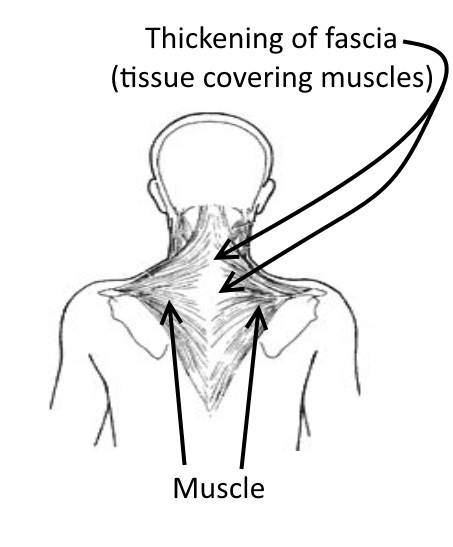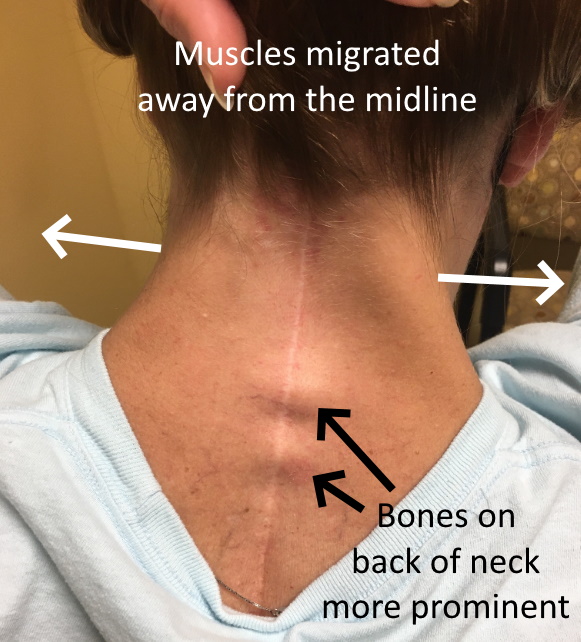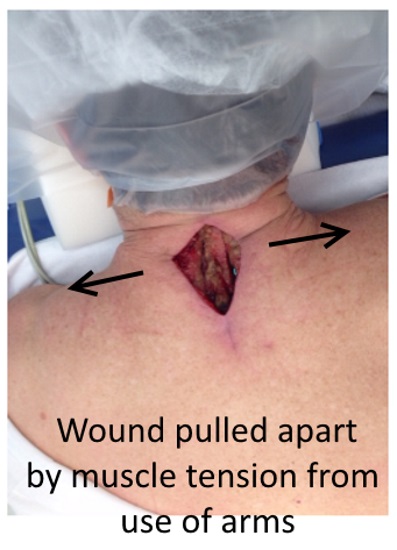Posterior Cervical Wound Dehiscence (wound splitting open)
Sometimes, for certain conditions of the cervical spine (neck), the surgical approach has to be from the posterior aspect (from behind). However, in these cases, the post operative course has some special considerations.
The fact is that many of the muscles supporting the arms and shoulders are attached to the midline thickening of the fascia (the sock that covers the muscles), and using the arms after surgery for any forceful activities, like pushing oneself up in bed, or pulling with force, could cause the wound to split open.
The muscles that support the shoulders are enclosed in fascia, and they are attached to a thickening of that fascia in the midline on the backside of the neck. This tissue is thick, like the gristle on a steak, but to get to the back of the cervical spine, we have to separate this midline fascia, and then at the end of the case, suture it back together.
Problem is: until the tissue heals, the sutures are only so strong, and only the fascia, not the muscles, can be repaired. Think of sewing a steak: the thread would pull right through, but it would probably grab the tougher part (gristle).
The risk: If the patient uses his/her arms for any strenuous activities, like pushing up from a bed or chair, or pulling anything, this repair can be pulled apart.


If there is strong force applied to the upper extremities, the repair of the midline fascia (like the gristle on a steak) can slowly pull apart, the net result of which is that the muscles that extend the neck and head move away from the midline, and the bones in the back of the neck (spinous processes) can be felt through the skin.
If this event occurs, the neck muscles get tired quicker, as they are in a worse position to help hold up the head. The neck muscles work better when they are closer to the midline.
Pictured to the left is a case where the patient used too much force on her arms, and about a month after the initial surgery, wound up pulling open the wound. Although this picture looks bad, we were able to repair the wound that had separated, and the patient healed uneventfully, though the healing process took twice as long. At the time the wound split open, the healing clock was started again, and revision repairs, with the healing process involving scar healing to scar, heal more slowly.
For patients who might have a posterior cervical surgery:
They CAN: move arms without resistance, get dressed, fix hair.
They CAN’T: use arms with any strong force (example: pushing up in bed or out of a chair).

